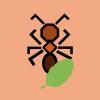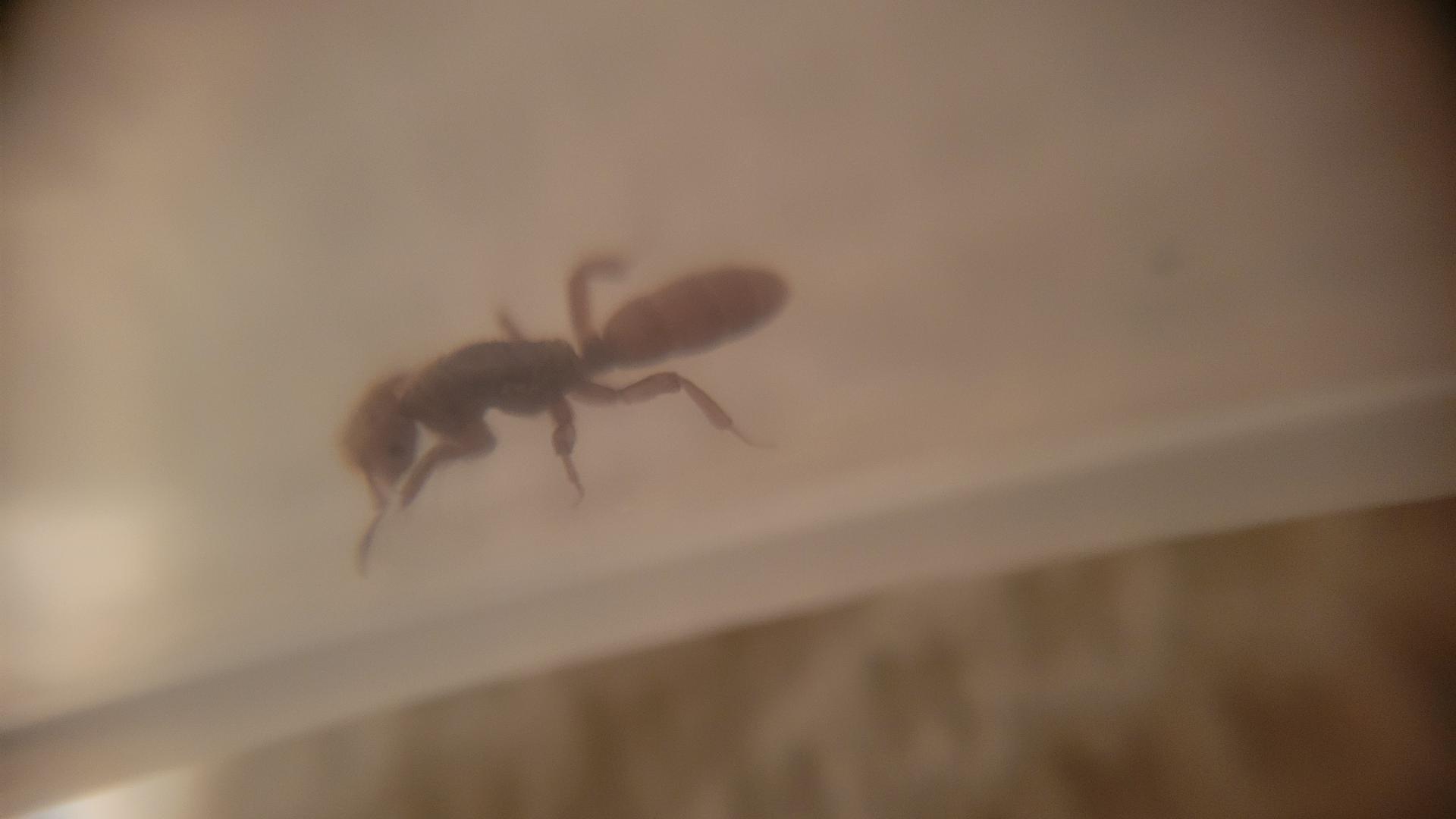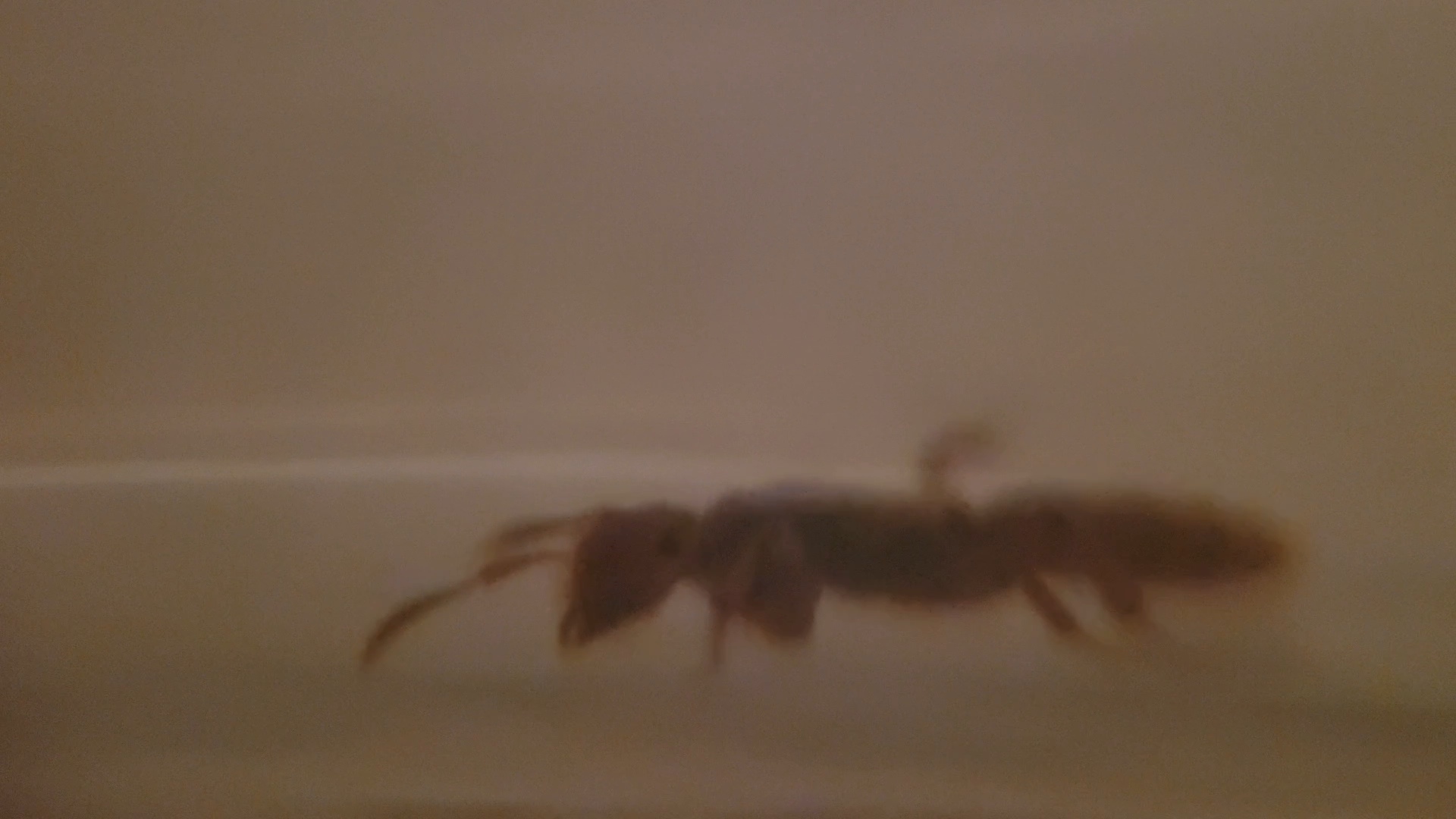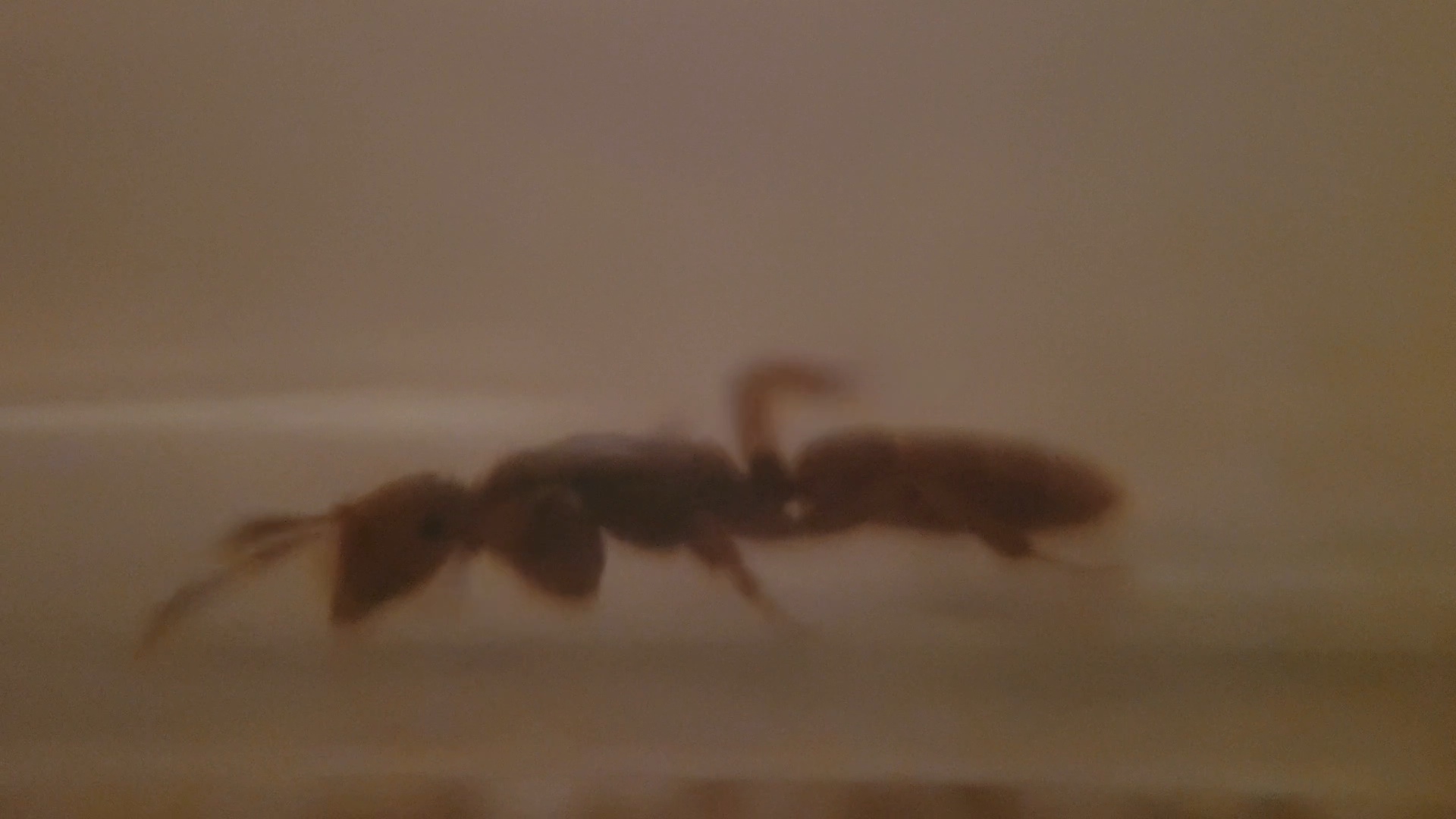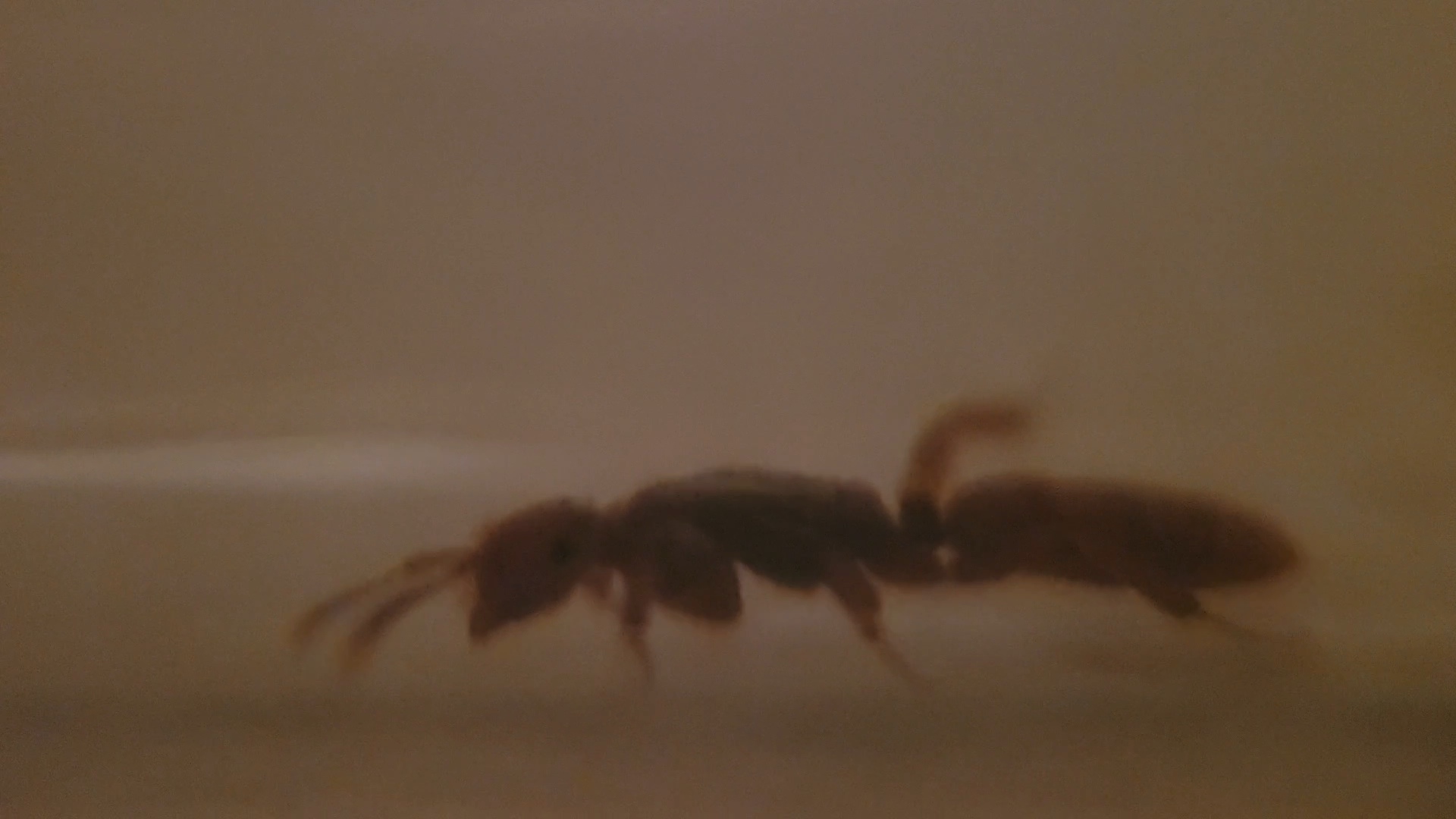L. murphyi or
Lasius murphyi,
a parasitic
Lasius species. It could also be
L. latipes, a relatively similar species, but note that the legs of this queen are thinner and not stocky legs like that found on that of
L. latipes. Another thing to note is that
L. murphyi tends to be dense with setae all over body for queens (according to AntWiki) and when looking at queen caste (also found on AntWiki), the head is very dense with setae (which can be seen with a clear look at the head if you use a camera or magnifying glass on your queen/de-alate) whereas
L. latipes is much less dense with setae on head comparatively. This species is known to be a temporary parasite; thus needs host workers to found (preferably any other
Lasius species, one to note being
L. neoniger according to AntWiki) and is known to be in Citronella Ant family formerly known as
Acanthomyops If I'm correct.
There is one article on the forum which talks a lot about host workers for temporarily parasitic
Lasius species, including advice about most of the species within the
Acanthomyops group of ants, as well as featuring introductory methods for host workers as well. It is a really informational article and I myself come back to it from time to time. Hope this helps!
Edit: I originally said L. latipes before editing the post for the first time (this being the second) but the legs didn’t look stocky from the photo angles so I changed back to L. murphyi, but you posted another thread saying that you caught two of the same queens with one being L. latipes, so this one is also most likely latipes as well. I believe their flight period is around the same time as they are both known to hybridize but whatever the case, L. latipes it is.
Edited by Artisan_Ants, August 16 2024 - 9:46 AM.
Keeping:
3x - S. molesta (colonies and single queen) 1x - C. nearcticus (founding but no eggs)  New!
New!
1x - C. chromaiodes (colony) 1x - C. subbarbatus (founding)
1x - F. subsericea (founding) 1x - T. sessile (mega colony)
3x - P. imparis (colonies)
2x - L. neoniger (founding)
Check out my C. nearcticus journal here: https://www.formicul...cticus-journal/
Check out my C. chromaiodes journal here: https://www.formicul...aiodes-journal/



